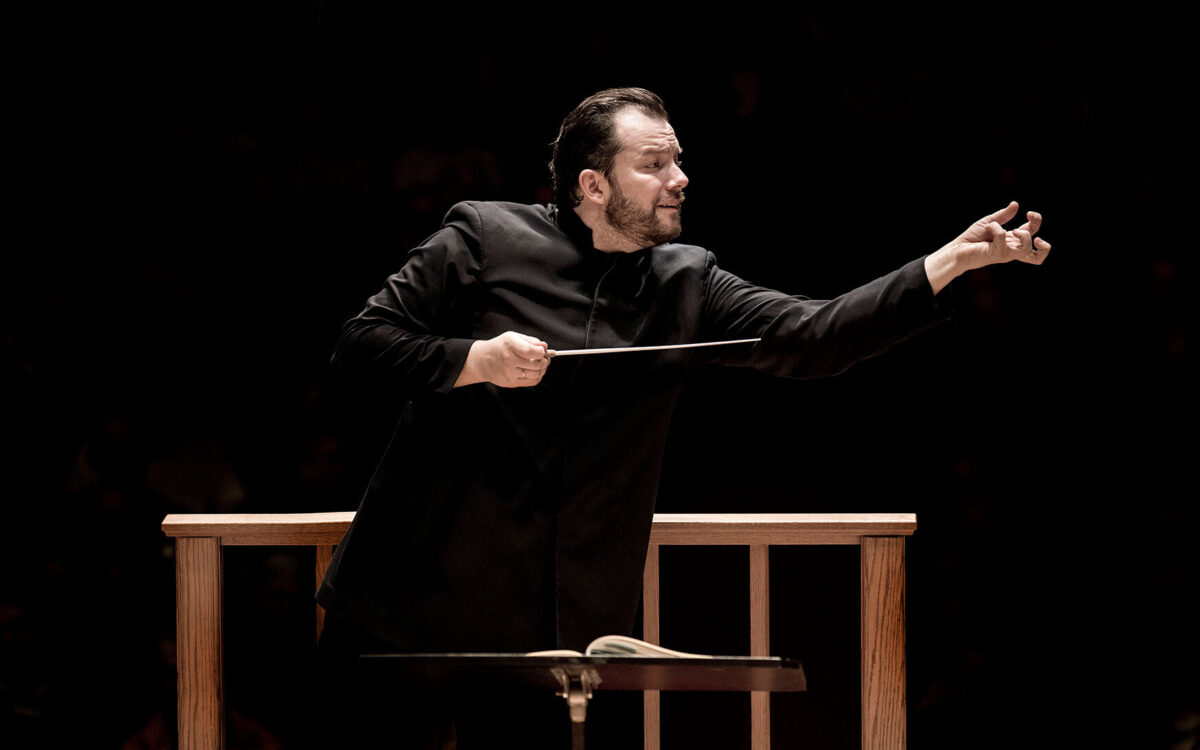Suite from Der Rosenkavalier
Richard Georg Strauss was born in Munich, Germany, on June 11, 1864, and died in Garmisch-Partenkirchen, Germany, on September 8, 1949. He collaborated on the opera Der Rosenkavalier with the poet and playwright Hugo von Hofmannsthal and completed the score September 26, 1910. Der Rosenkavalier was premiered at the Königliches Opernhaus in Dresden on January 26, 1911, Ernst von Schuch conducting; the director was Max Reinhardt, and the production starred Margarethe Siems as the Marschallin, Minnie Nast as Sophie, Eva von der Osten as Octavian, Karl Perron as Baron Ochs, and Karl Schneidemantel as Faninal. The present suite from the opera is the most complete group of symphonic excerpts from the opera. The score credits no arranger, but is generally attributed to the conductor Artur Rodzinski, who led the suite’s first performance with the New York Philharmonic-Symphony on October 5, 1944.
The score of the Rosenkavalier Suite calls for 3 flutes (3rd doubling piccolo), 3 oboes (3rd doubling English horn), E-flat clarinet, 2 clarinets, bass clarinet, 3 bassoons (3rd doubling contrabassoon), 4 horns, 3 trumpets, 3 trombones, tuba, timpani, percussion (triangle, tambourine, cymbal, ratchet, snare drum, bass drum), celesta, two harps, and strings (first and second violins, violas, cellos, and double basses). This suite is about 25 minutes long.
By 1909 Strauss was, with Puccini, the most famous and the richest composer alive. He had written a string of orchestral works—Aus Italien, Macbeth, Don Juan, Ein Heldenleben, Tod und Verklärung, Till Eulenspiegel, Also sprach Zarathustra, Don Quixote, and the Symphonia domestica—many of which at once became indispensable repertory items; he had emerged as an important song composer; and latterly, with Salome in 1905 and Elektra at the beginning of 1909, he had made his mark in the opera world, and in a big way. As far back as 1903 he had seen Max Reinhardt’s Berlin production of a new adaptation of Sophocles’ Electra by the then 29-year-old Viennese poet Hugo von Hofmannsthal. It interested him as possible operatic material, but not until 1906 did he ask von Hofmannsthal for permission to set the play. It was the prelude to an extraordinary working friendship that lasted through a further half-dozen major projects until the poet’s death in 1929 and that properly began with their collaboration on Der Rosenkavalier. Drawing on a vast range of sources, von Hofmannsthal provided a libretto of which Strauss said that it practically set itself to music. The action takes place in 18th-century Vienna.
In brief: the young wife of Field Marshal von Werdenberg has taken as lover the 17-year-old Count Octavian Rofrano. She receives a call from an impoverished and chawbacon country cousin, Baron Ochs auf Lerchenau, who has come for advice. He has arranged to become engaged to Sophie von Faninal, daughter of a newly rich and newly ennobled army contractor who is as keen to benefit from Ochs’s title as Ochs is to get hold of some of the Faninal money. Custom—and this is entirely an invention of von Hofmannsthal’s—demands that the formal proposal be preceded by the presentation to the prospective bride of a silver rose: can the Marshal’s lady suggest a young man of suitable bearing and background to take on the role of the rose-bearing knight, the “Rosenkavalier”? The Marschallin, as she is always referred to, suggests Octavian. Octavian and Sophie fall in love at sight; by means of a series of degrading tricks the projected Ochs-Faninal alliance is undermined; and the Marschallin and Ochs renounce Octavian and Sophie respectively, the former with sentimental dignity, the latter in an atmosphere of rowdy farce.
The Rosenkavalier Suite consists of the following passages from the opera: the Prelude, which depicts with drastic explicitness the bedtime fun of the Marschallin and Octavian; the scene of Octavian’s presentation of the silver rose to the blushing 16-year-old Sophie and the subsequent conversation of the two; music associated with Ochs, specifically the waltz in which he states that no night with him can ever be too long; the trio—three simultaneous soliloquies actually—of the Marschallin, Octavian, and Sophie, just after Octavian, not without a somewhat angry nudge from the Marschallin, has found the courage to cross the stage from his old love to his new; the final duet of Octavian and Sophie; and another of Ochs’s waltzes, an exuberant one to which he sings that he can’t help it, he just has the good luck of all Lerchenaus (this is the one item in the suite that departs from the sequence of events in the opera, the arranger obviously wanting a bang-up finale).
The publisher’s catalogue, incidentally, abounds in arrangements of music from Der Rosenkavalier for, among other things, piano and piano duet, unaccompanied violin or flute or cello (all available in simplified versions), mandolin or two mandolins or two mandolins with piano, band arrangements for each branch of service (all had distinctive combinations in the bands of the old German and Austrian armies), Schrammel quartet (the combination of two violins with guitar and accordion one hears in Viennese wine gardens), and zither.
Michael Steinberg
Michael Steinberg was program annotator of the Boston Symphony Orchestra from 1976 to 1979, and after that of the San Francisco Symphony and New York Philharmonic. Oxford University Press has published three compilation volumes of his program notes, devoted to symphonies, concertos, and the great works for chorus and orchestra.
The first American performance of Der Rosenkavalier took place at the Metropolitan Opera in New York on December 9, 1913. Alfred Hertz conducted, with Frieda Hempel as the Marschallin, Margarete Ober as Octavian, Anna Case as Sophie, Otto Goritz as Baron Ochs, and Hermann Weil as Faninal.
The first Boston Symphony performance of any music from Der Rosenkavalier was of the present orchestral suite, in January 1949 with Thor Johnson conducting, though waltzes from the opera entered the Boston Pops repertoire already in May 1911, just four months after the opera’s premiere.

